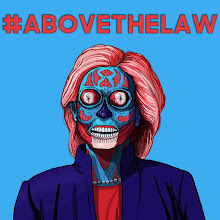Good editorial from NRO:
Reckoning with Ricci [NRO Staff]
Our editorial this morning:
The Supreme Court ended its term on Monday by ruling that the City of New Haven’s intentional discrimination against 20 mostly white firefighters — denying them promotions after they had received the highest grades on qualifying examinations — violated federal law. Honoring the principle of equality under the law, the Court’s much-anticipated decision in Ricci v. DiStefano awarded judgment in favor of the firefighters, reversing lower court rulings that had peremptorily dismissed the case.
The Court also honored the principle of judicial restraint. The ruling, authored by Justice Anthony Kennedy and joined by the Court’s conservative bloc (Chief Justice Roberts, and Justices Scalia, Thomas, and Alito), resolved the case strictly under the governing statute, the Civil Rights Act of 1964, as amended in 1991. The justices left for another day the core constitutional question of whether the Civil Rights Act’s “disparate impact” provisions — which sometimes require race-conscious remedies — are valid under the Fourteenth Amendment’s equal-protection clause.
The decision is a sharp rebuke for Second Circuit Judge Sonia Sotomayor, Pres. Barack Obama’s nominee to replace Justice David Souter when the Supreme Court convenes in October. Justice Ruth Bader Ginsburg filed a dissenting opinion that was joined by the Court’s three other reliable liberals (Justices Stevens, Souter, and Breyer), and thus administration spinners are already whirring about how the 5-4 majority purportedly shows that Sotomayor’s handling of the case was in the mainstream.
That rhetorical sleight of hand, however, misstates both the facts and the nature of the complaint against Sotomayor.The only consensus the nine justices found was that the handling of case by Sotomayor’s three-judge appeals-court panel was shoddy. Even the four dissenting justices agreed that the Second Circuit applied the wrong legal standard.
The majority was less charitable, rehearsing the machinations by which the lower courts tried to bury the firefighters’ discrimination claims: While conceding evidence of intentional discrimination, a district judge disposed of the claims in an unpublished order, which Sotomayor’s panel then rubber-stamped in an unpublished summary order of its own. That maneuver prompted a withering protest from Second Circuit judge Jose Cabranes, a highly respected Clinton appointee, who was startled at his court’s cavalier treatment of such profound legal issues.
Judge Cabranes was prophetic. Even without reaching the constitutional question at the heart of the dispute, the case generated four opinions, totaling 93 pages, from the nation’s highest court. Sotomayor had not thought the claims worth discussing at all. Furthermore, that Sotomayor had reached the wrong result was never the main point of contention. It was her frivolous manner of addressing weighty issues — evidence that, as Edward Whelan observed at NRO’s Bench Memos, “the ugly flip side of [Sotomayor’s] selective empathy towards certain favored litigants is selective antipathy towards disfavored litigants.”
Obviously, the decision is bad news for both Sotomayor supporters and New Haven officials, who (as detailed in a hair-raising concurrence by Justice Alito) worked frantically behind the scenes to kill the promotional test results in order to appease influential agitators in New Haven’s black community. Regrettably, businesses across America will also be left unhappy. The ruling, at best, will merely refine future discrimination litigation, not end it. Thanks to the courts and Congress, this area is a morass.
The landmark Civil Rights Act of 1964 targeted intentional discrimination — that is, disparate treatment in employment opportunity based on race, color, religion, sex, or national origin. It did not encompass disparate-impact-discrimination theory, the notion that illegal discrimination should be inferred, even in those cases in which illicit intent cannot be discovered, if employer actions cause outcomes that are uneven by race or the other suspect categories. Disparate-impact discrimination was concocted by the Supreme Court in 1971 and, unfortunately, codified two decades later when President George H. W. Bush signed the Civil Rights Act of 1991 (over this magazine’s objections).
The act’s internal contradictions put employers in a pincer. The law mandates race-conscious remedies if disparate impact suggests discrimination, yet it also prohibits intentional discrimination in employment decisions. An employer must fear being sued both if he unintentionally discriminates and if he takes curative steps that are race-conscious.
Today’s ruling clarifies that the mere fear of being sued will not justify an employer’s intentional discrimination unless there is a “strong basis in evidence” to believe the employer will be liable under disparate-impact discrimination principles. But it won’t make such lawsuits much less frequent or less prohibitively expensive. And for many of these suits, it won’t make resolution any easier. It may be straightforward enough when, as in Ricci, an employer appears to be citing disparate-impact concerns as a pretext to avoid provoking a powerful political constituency. But in other cases, the employer will not be acting pretextually — he will be motivated to take race-conscious remedial action because he fears, in good faith, being found liable.
That is, this case does not settle whether governments can ever be justified in requiring intentional discrimination to address disparate impact — can ever be justified, that is, in picking winners and losers according to race rather than merit — given the Constitution’s command of equal protection. It was proper for the justices to sidestep that question this time. But as Justice Scalia pointed out in his concurrence, the question can’t be sidestepped forever.
Subscribe to:
Post Comments (Atom)





No comments:
Post a Comment